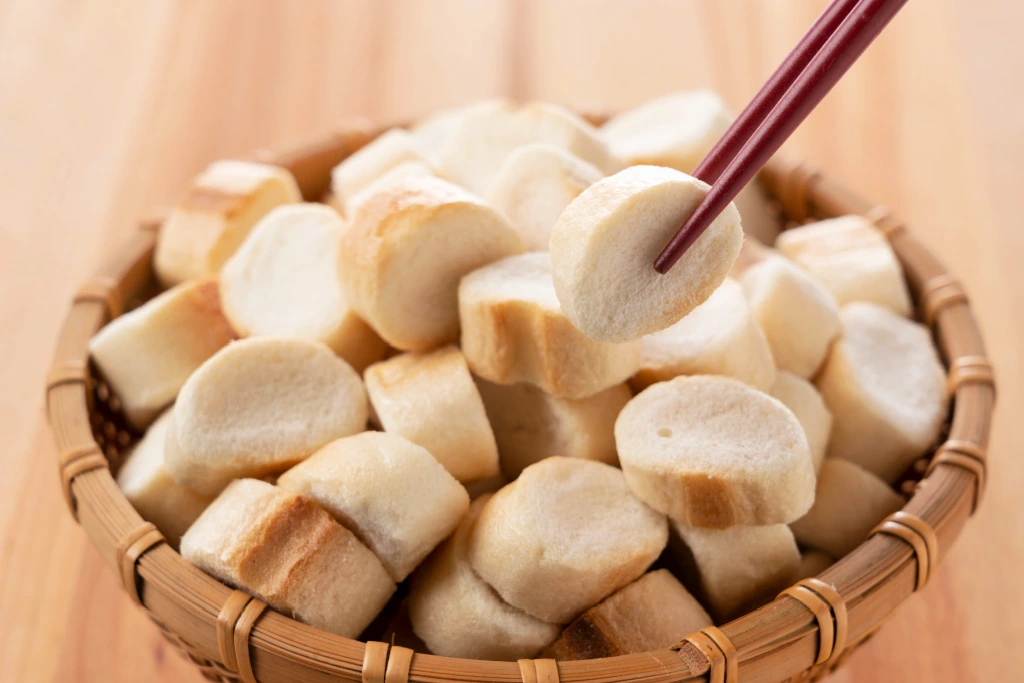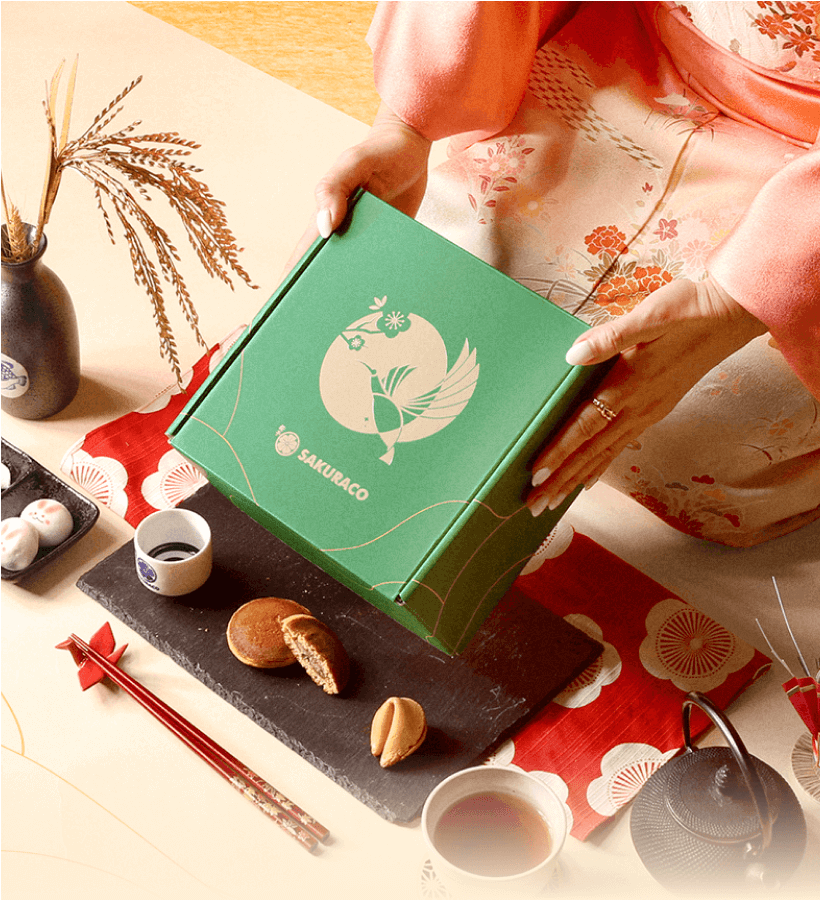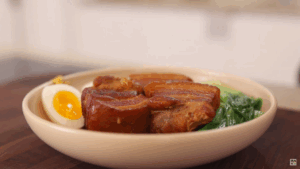Japanese cuisine is well known for its unique ingredients that are delicious and good for health. One ingredient that plays an essential role in the traditional food culture of Japan is fu, also known as Japanese wheat gluten. This special food can shine on its own or blend harmoniously with other ingredients, helping to balance and enhance the flavors in a dish. Let’s explore this interesting ingredient together more!
Table of Contents
ToggleWhat is fu?
Fu is a delicate and unique food made from wheat gluten. It doesn’t have much taste, but that makes it amazing. Fu acts like a sponge, soaking up the yummy flavors from soups, sauces, and seasonings around it. Depending on the type and how it’s cooked, it can feel chewy, fluffy, or soft when you eat it. Sometimes, it feels silky, and sometimes, it’s more springy.
Because of this, many people enjoy fu in soups, stews, or fried dishes, especially during celebrations, festivals, and cozy family meals. You can find this ingredient in shops that sell traditional Japanese food. It’s also used in Buddhist vegetarian dishes and fancy meals like kaiseki cuisine. Making fu takes skill and care. The wheat gluten is washed, kneaded, shaped, boiled, steamed, roasted, or dried. Some types are only made in certain parts of Japan, and local shops are proud of their unique versions.
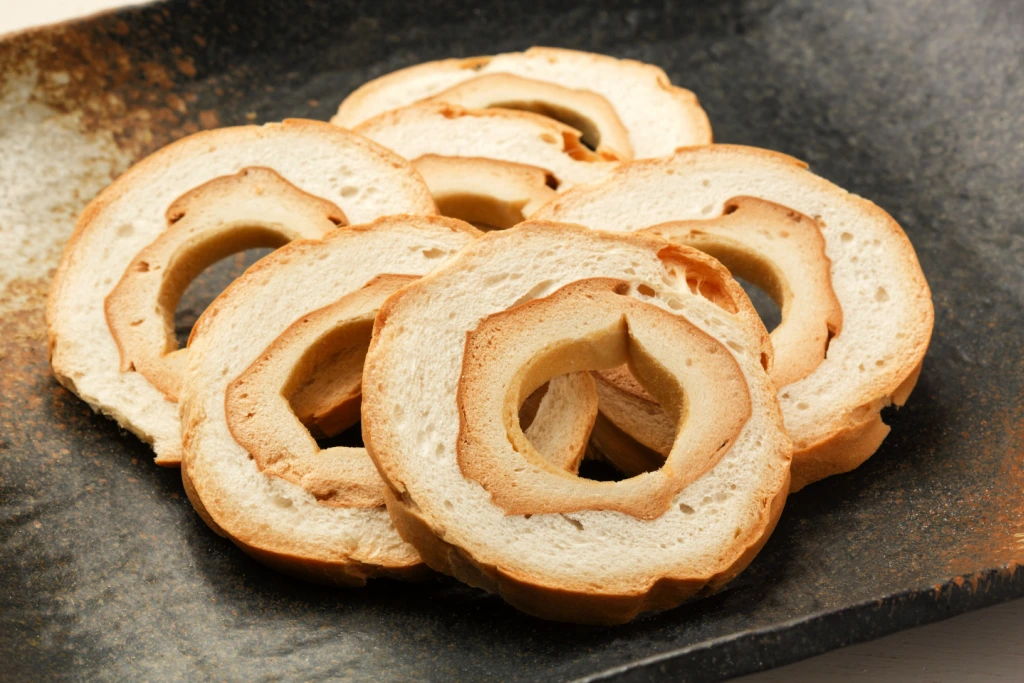
There are two main kinds of Japanese wheat gluten: namafu and yakifu. Namafu is soft and fresh. It’s created by mixing gluten with glutinous rice flour, then steaming or boiling it. Namafu often comes in fun colors and shapes. Some are crafted with mugwort for a green color and gentle herbal taste, while others include sesame, chestnut, or plum. These types are soft, smooth, and very gentle on the tongue.
On the other hand, yakifu is baked and dried, so it lasts longer and is great for storage. Before eating, yakifu is soaked in water and squeezed, then added to hot soups or fried dishes. It becomes puffy and chewy again when cooked. There are many pretty types of yakifu, too, such as wheel-shaped kurumafu or flat-board-shaped shonaifu.
Where did it come from?
Fu came to Japan during the Muromachi period (1336-1573). It was brought from China by Zen Buddhist monks who traveled there and learned how to make it. Since monks in Japan couldn’t eat meat, they needed something healthy and full of energy. That’s how fu became an essential part of temple meals called shojin ryori (Buddhist vegetarian cooking).
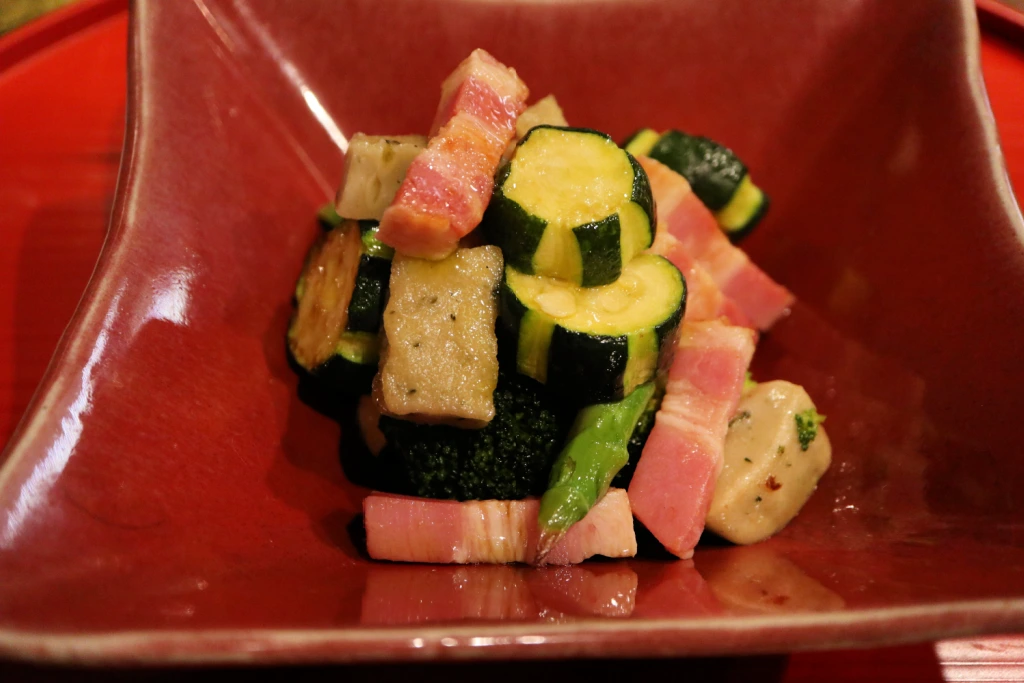
At first, Japanese wheat gluten was only eaten by noble families, monks, or at big ceremonies. It was rare because wheat was not easy to grow back then, so fu was a special treat. The city of Kyoto became the heart of fu culture. This is where many temples and the Imperial Palace were, so fu was made with great care and beauty. As time passed, people started making fu in various shapes and colors.
Japan’s trade grew in the Edo period (1603-1868), and more wheat was brought in from other countries. Because of that, fu became easier to find, and people in towns all over Japan began enjoying it in their soups and hotpot. Long cargo ships helped carry fu from place to place, so even faraway villages got to try it. During the Meiji era (1868-1912), machines helped make flour finer, giving fu a smoother, softer texture.
Are you looking for interesting snacks like fu? Check out Sakuraco! Sakuraco delivers traditional Japanese snacks, teas, and sweets from local Japanese makers directly to your door so you can enjoy the latest treats directly from Japan!
Is fu good for your health?
It’s a light and healthy food that gives you lots of plant-based protein without too many calories or fat. That means it helps keep your body strong and full of energy, but it won’t make you feel heavy. You’ll find essential nutrients like iron, zinc, and fiber inside fu. It also has special amino acids such as proline and glutamic acid, which help your body make collagen, support your brain, and keep your stomach healthy.
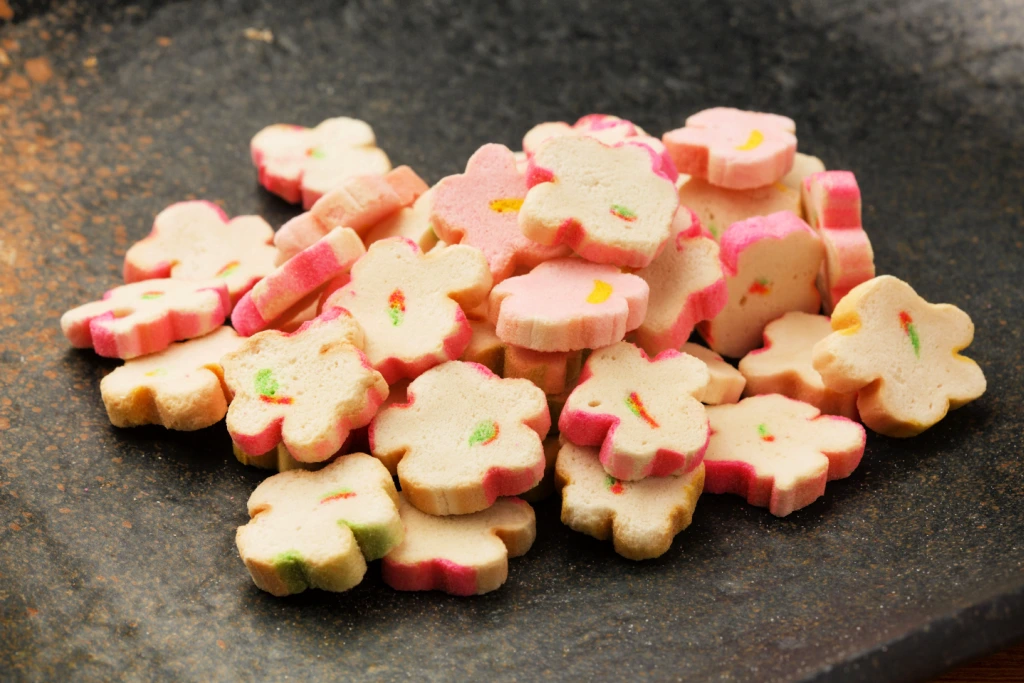
Fu comes in many types, but they all have something in common: they are easy to digest, full of protein, and low in fat. That makes them a wise choice for people who want to stay healthy, get beautiful skin, or even lose weight. This food can also help protect you from sicknesses like high blood pressure or diabetes.
Popular dishes with fu
Osumashi
Osumashi is a light and elegant Japanese clear soup made with a delicate dashi broth, gently seasoned with soy sauce and salt. It is often enjoyed during special occasions like New Year’s Day, Hinamatsuri (Girl’s Day), or seasonal festivals.
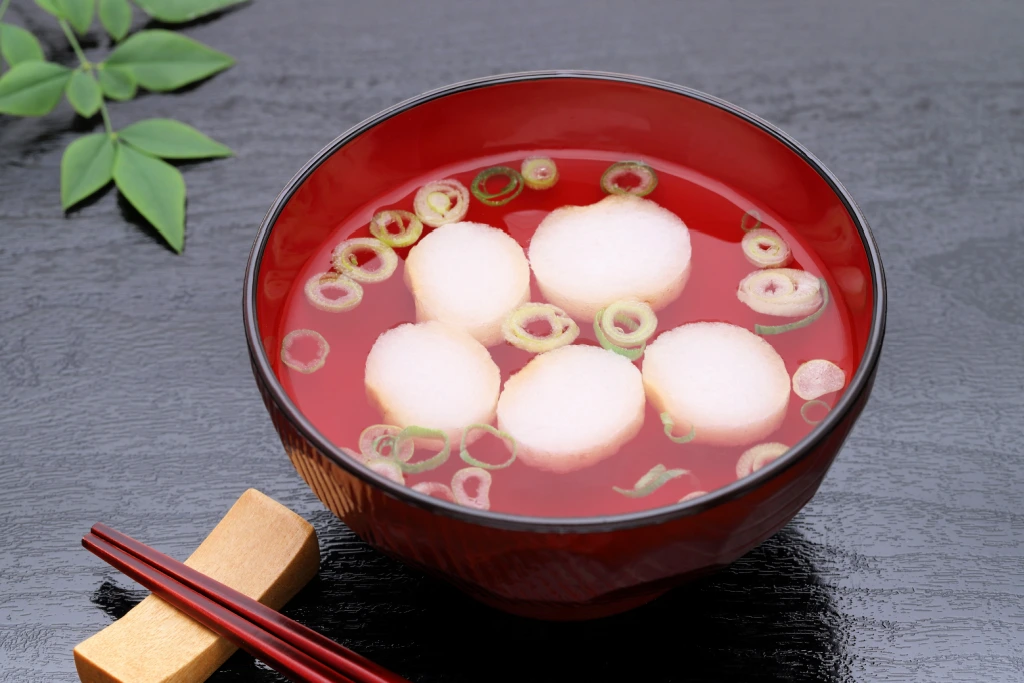
Inside the clear broth, you’ll find pretty toppings like soft flower-shaped fu, colorful fish cakes, shiitake mushrooms, and fresh green mitsuba leaves. The fu is especially fun, soaking up the broth and adding a fluffy, gentle texture. Each bowl of osumashi feels like a little celebration, simple yet beautiful.
Fu Champuru
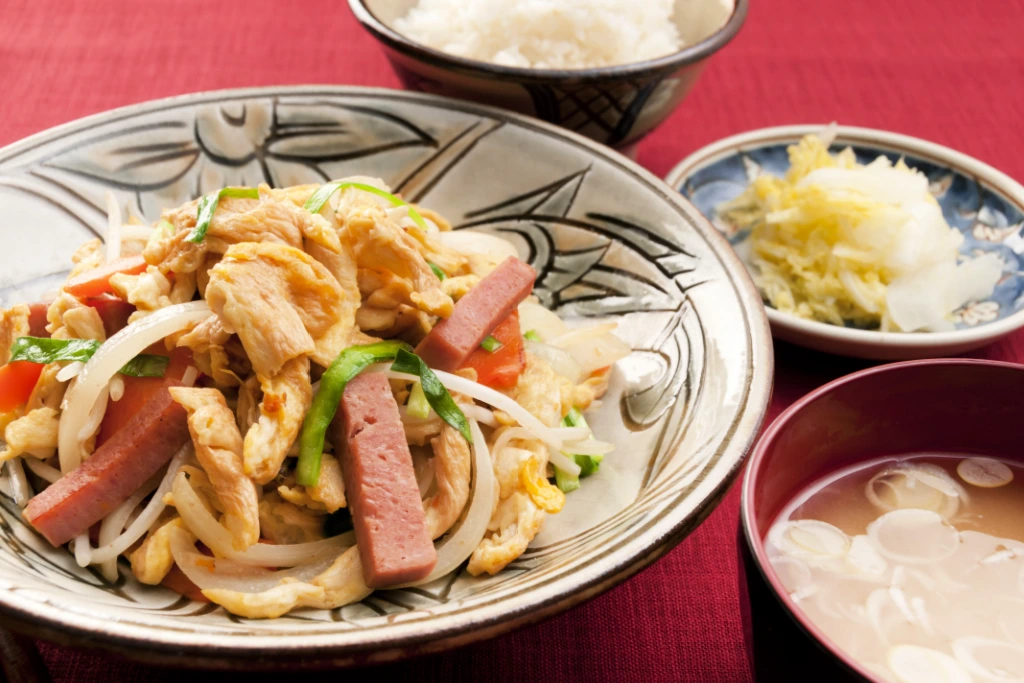
Fu champuru is a cheerful and tasty stir-fry dish from Okinawa. The word champuru means “something mixed” in the Okinawan language, and this dish is all about mixing delicious things. In Fu Champuru, soft and chewy slices of fu, which is made from wheat gluten, are soaked and stir-fried with eggs, vegetables like cabbage or bean sprouts, and sometimes tofu. Fu is often used as a healthy and meat-free option that still feels hearty and filling.
Namafu Dengaku
Namafu dengaku is a delightful and refined dish from Kyoto made by grilling soft, chewy namafu and topping it with a rich miso glaze. Its mild flavor makes it the perfect match for soaking up miso’s sweet and savory taste. The name “dengaku” comes from an old harvest dance, and this dish is often made to give thanks for good crops.
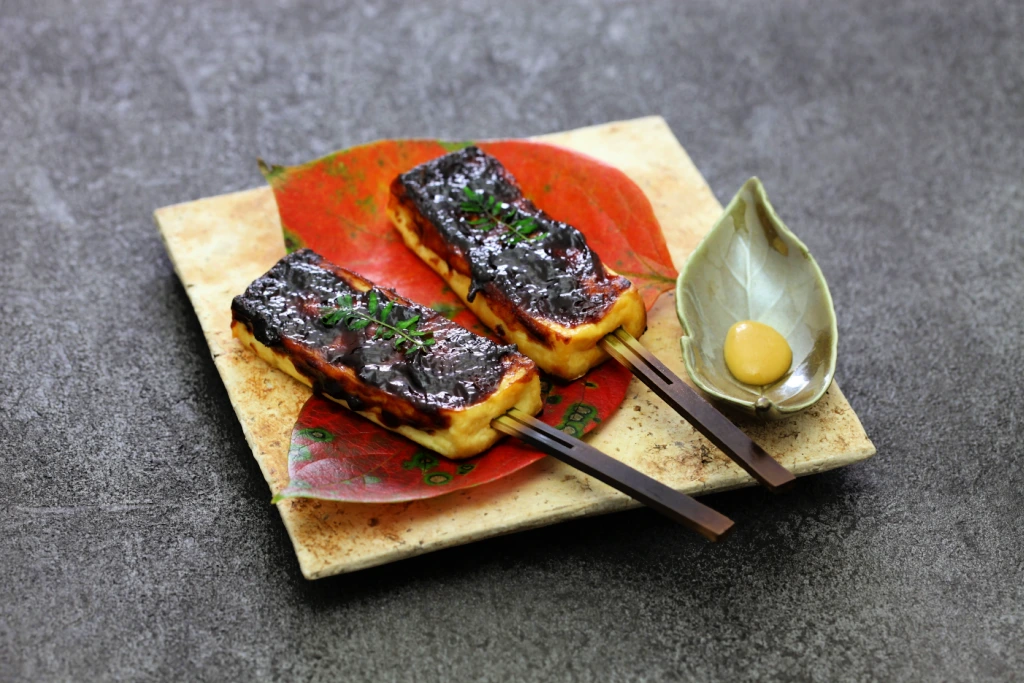
When grilled until just slightly golden, the miso becomes fragrant and smoky, adding a deep, comforting flavor. You can use many types of miso, such as red, white, or blended. Namafu itself can be found in pretty colors and patterns, making this dish yummy and lovely.
Why should you use Japanese wheat gluten in cooking?
Japanese wheat gluten reflects the careful balance and beauty of traditional Japanese cooking. With its gentle flavor and distinctive texture, wheat gluten lets other ingredients shine, while quietly adding depth and softness to each dish.
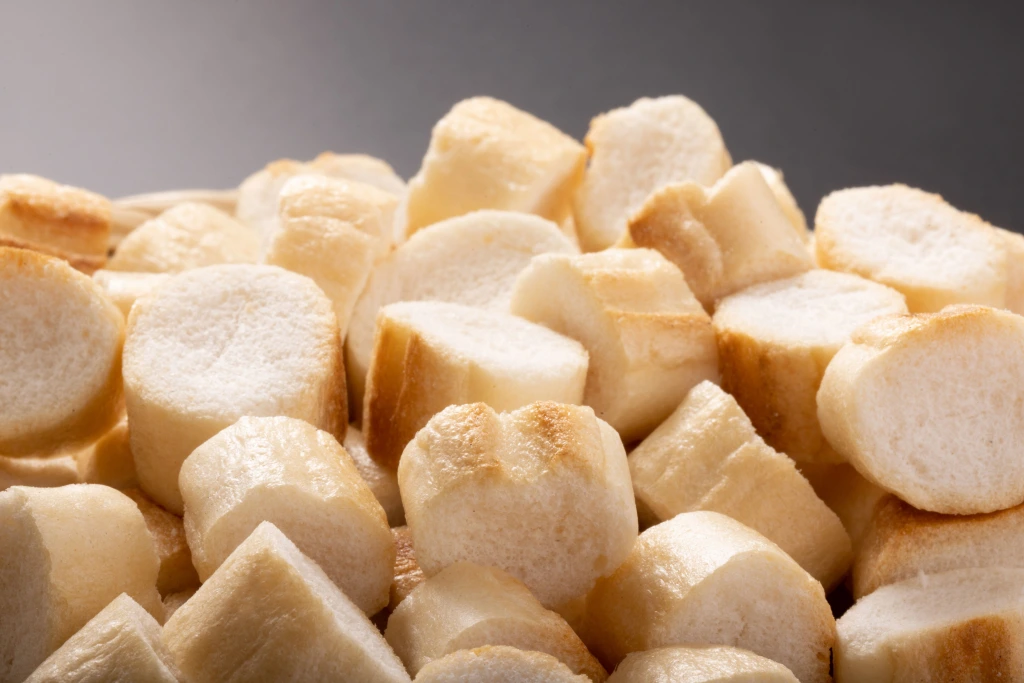
It is light on the stomach, full of plant-based protein, and beautifully fits into old and new recipes. From temple meals to modern home kitchens, fu plays a gentle but essential role. Have you ever tried cooking with wheat gluten before? What kind of dish would you like to create with it? Let us know in the comments below.

